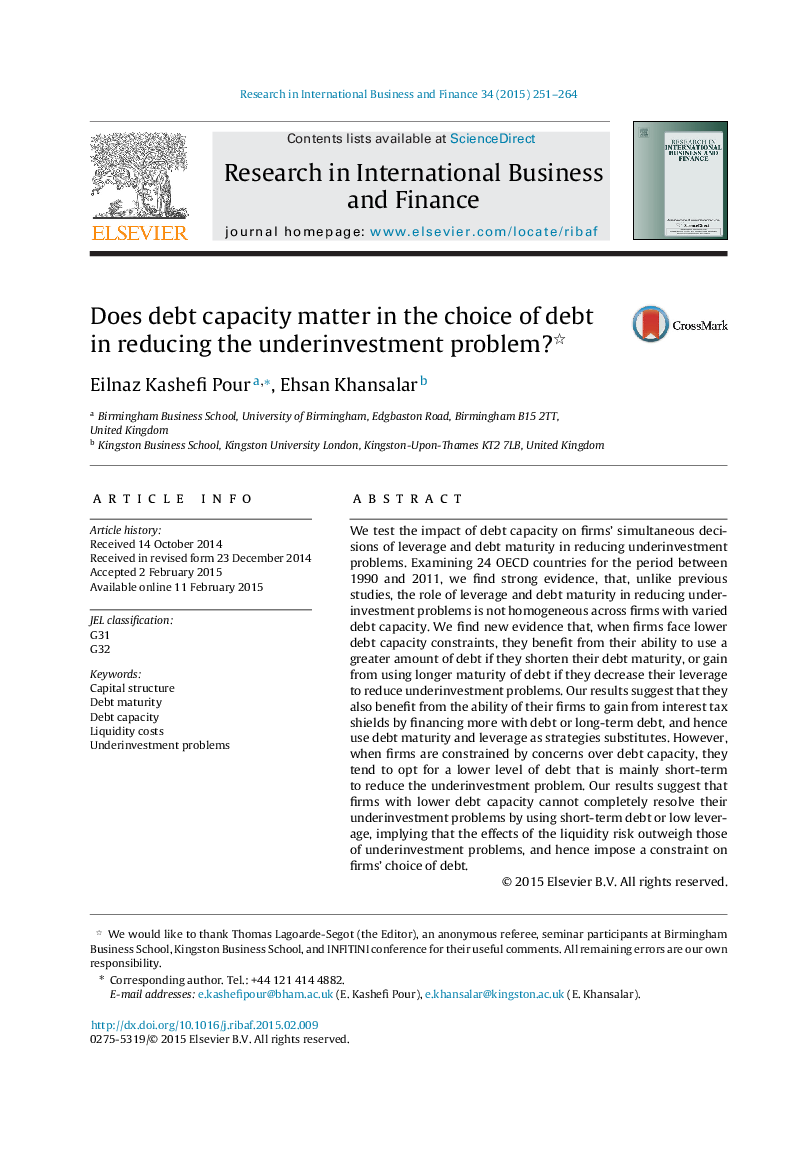| Article ID | Journal | Published Year | Pages | File Type |
|---|---|---|---|---|
| 1003111 | Research in International Business and Finance | 2015 | 14 Pages |
We test the impact of debt capacity on firms’ simultaneous decisions of leverage and debt maturity in reducing underinvestment problems. Examining 24 OECD countries for the period between 1990 and 2011, we find strong evidence, that, unlike previous studies, the role of leverage and debt maturity in reducing underinvestment problems is not homogeneous across firms with varied debt capacity. We find new evidence that, when firms face lower debt capacity constraints, they benefit from their ability to use a greater amount of debt if they shorten their debt maturity, or gain from using longer maturity of debt if they decrease their leverage to reduce underinvestment problems. Our results suggest that they also benefit from the ability of their firms to gain from interest tax shields by financing more with debt or long-term debt, and hence use debt maturity and leverage as strategies substitutes. However, when firms are constrained by concerns over debt capacity, they tend to opt for a lower level of debt that is mainly short-term to reduce the underinvestment problem. Our results suggest that firms with lower debt capacity cannot completely resolve their underinvestment problems by using short-term debt or low leverage, implying that the effects of the liquidity risk outweigh those of underinvestment problems, and hence impose a constraint on firms’ choice of debt.
